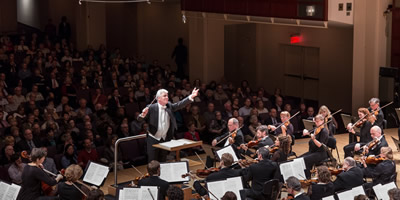The performance of Richard Einhorn’s Voices of Light: The Passion of Joan of Arc at Unitarian Universalist Fellowship of Raleigh was a special experience for local concert-goers. The music was inspired by the composer’s visual experience of the 1928 acclaimed and controversial silent film, The Passion of Joan of Arc, by Danish film director Carl Dreyer. The concert was fascinating on three levels.
First there is the subject of the film and the music: Joan of Arc, or Jeanne d’Arc in French. Born about 1412, she reportedly heard voices telling her to rouse the French army and lead them to drive the English out of France and establish the monarchy of King Charles VII. She was tried for heresy and burned at the stake when she was only 19 years old. The judgment was revoked by the Pope in 1455 and she was declared innocent and a martyr. In 1920 she was canonized as a saint by Pope Benedict XV. The public’s fascination with her adventures has led to numerous books, plays, and motion pictures.
Danish film maker Carl Theodore Dreyer created his film, The Passion of Joan of Arc, in 1928. The film itself has a fascinating history. It was lost in a fire shortly after its premiere. Dreyer put together a second edition from out-takes. This too was lost in a fire. It was as recent as 1981 that a complete copy of the original film was found in a closet in a mental hospital in Oslo. The film was in nearly perfect condition and was shipped unopened to the Norwegian Film Institute. It was meticulously preserved and later copied to a digital format and made available to the public.
The Passion of Joan of Arc is based on the actual transcripts of the trial that took place in Rouen, the seat of English occupation in France. The issue was that Joan claimed to be sent on her mission directly by God; this was seen as a denial of the authority of the Church. The events of the movie take place on one day at the trial with subtle flashbacks of key events. The use of close-ups, unique camera angles, and sequencing of the story make for an emotionally moving and stunning experience. The close-up shots of actress Renee Falconetti are an amazing piece of art, revealing the innocence, simplicity, strength, devotion, and complexity of the teen-age heroine.
Adding to the 15th-century mysticism and ambience, composer Richard Einhorn wrote an oratorio, Voices of Light: The Passion of Joan of Arc, to accompany the silent film. His music is a skillful combination of early renaissance style and 20th-century minimalism that matches the spirit of the film admirably. The oratorio is scored for orchestra, chorus, soloists, and an ensemble of four women’s voices portraying the words of Joan herself taken from her letters. Other text is drawn from the Bible and writings of Christian women mystics, most notably Hildegard von Bingen. The over-all impact was often stunning and deeply moving. It was a bit of a challenge to follow the subtexts on the screen or the printed texts of the oratorio, but it really didn’t matter much in the final analysis.
The members of the Raleigh Symphony Orchestra as an ensemble and as soloists played with passion and precision. The Concert Singers of Cary sang their hearts out in the most dedicated performance I have ever heard them give. Mary Adoki, Laura Jones, Wade Henderson, and Donald Milholin, all highly regarded local soloists, were all in top form, with Henderson in particular singing some extraordinarily commanding passages. Megan Bender, Janelle Guthrie, Justine Limpic, and PJ Zhu, collectively the voice of Joan, provided a mystical and touching portrait.
The movie, the story, and the music all came together under the direction Lawrence Speakman to provide an awesome experience that will not be soon forgotten by those fortunate enough to get in. The performance at the Unitarian Universalist Fellowship of Raleigh was completely sold out. Is it too much to hope that this artistic triumph may be repeated in the not-too-distant future?











